Toraji Ishikawa’s ‘Moga’
The 1934 series of engravings 'Ten Types of Female Nudes' is an ode to a new form of femininity, that of the Japanese 'modern girl.'
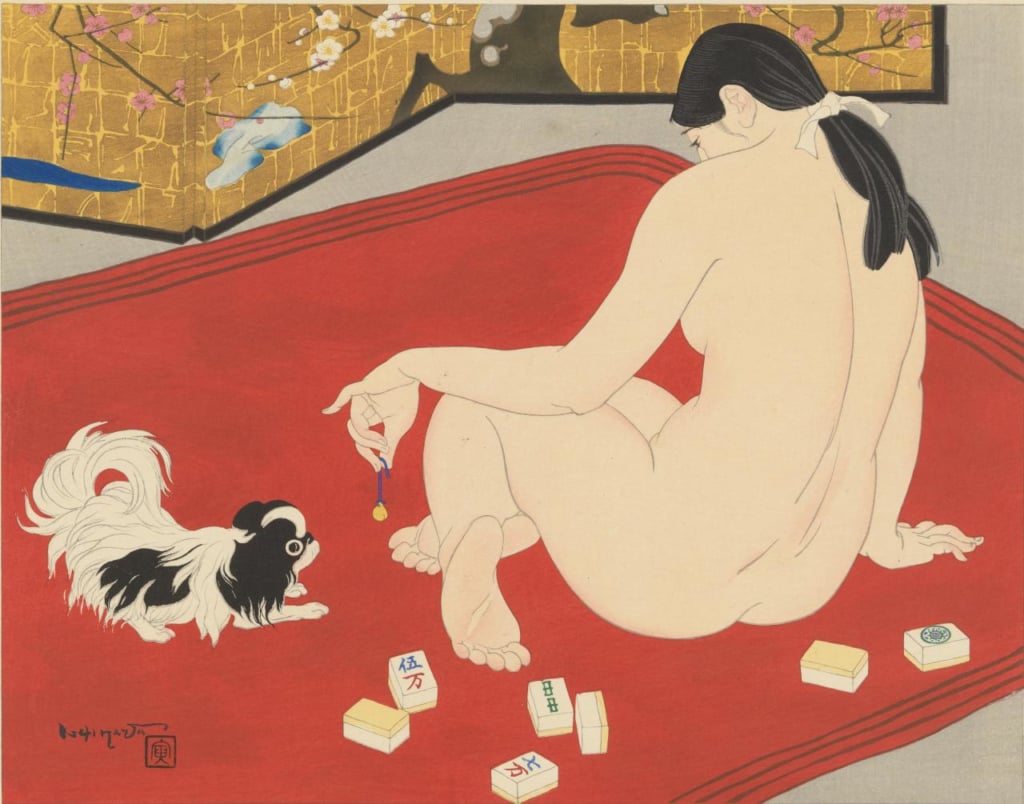
“Sound of the bell (Suzu no ne 鈴の音)” - 1934 from the “Ten types of female nudes (Rajo Jusshu 裸女十種)” series © National Gallery of Victoria, Melbourne Purchased, NGV Asian Art Acquisition Fund, 2014 This digital record has been made available on NGV Collection Online through the generous support of The Gordon Darling Foundation
On his return after three decades spent travelling across Europe and the United States, Toraji Ishikawa presented a series of engravings entitled Ten Types of Female Nudes in 1934. The early 20th century was marked by a profound change in Japanese society as a result of an increasing openness to cultural influences from overseas, and the artist shook up the genre of female representation. The series was censored immediately due to its ‘pornographic’ character.
Born in Kochi on the island of Shikoku in 1875, the artist trained alongside Shotaro Koyama, then was involved in the reorganisation of the Meiji Fine Arts Society, renamed the Pacific Painting Society (Taiheiyo-Gaikai), in 1902. Inspired by post-impressionism and artists like Edgar Degas, Félix Vallotton, Gustave Courbet, and Henri Matisse, his body of work was characterised by nudes. In 1943, Toraji Ishikawa became director of the Pacific Painting Society, before working at Tokyo University and being awarded the Imperial Award of the Japan Art Academy in 1953.
Emancipated women
The nudes depicted by Toraji Ishikawa show a type of young woman that the Japanese call moga—from the expression modan garu, meaning ‘modern girl’—and in the Shin-hanga style. As historian Hiroshi Minami, cited by Sandra Schaal, declares, this woman is ‘the symbol of a clash of cultures and values linked to the advent of a form of Japanese modernism strongly influenced by Americanism in what embodied her most striking aspect: morals.’ Independent, modern, on the path towards a form of freedom that some considered subversive, she sets herself apart from the traditional representation of a Japanese woman subjugated by patriarchal society.
In the series of wood engravings Ten Types of Female Nudes, Toraji Ishikawa shows Japanese women alone, and nine of them are presented in their intimacy. These naked women—one of whom is smoking—wear jewellery and lipstick and have modern hairstyles, strengthening the message of freedom and breaking convention.
When looking back over Toraji Ishikawa’s career, this series of nudes is striking in its singularity. The artist, who started out as a landscape painter, reverted to government orders from 1938 onwards— particularly during the Second World War—in opposition to what he is now known for. The theory proposed by Kendall Brown in Light in Darkness: Women in Japanese Prints of Early Showa (1926-1945) is that Toraji Ishikawa was led astray by more ‘decadent’ friends.
Ten Types of Female Nudes (1934) is a series of wood engravings by Toraji Ishikawa, some of which can be viewed on the National Gallery of Victoria’s website.
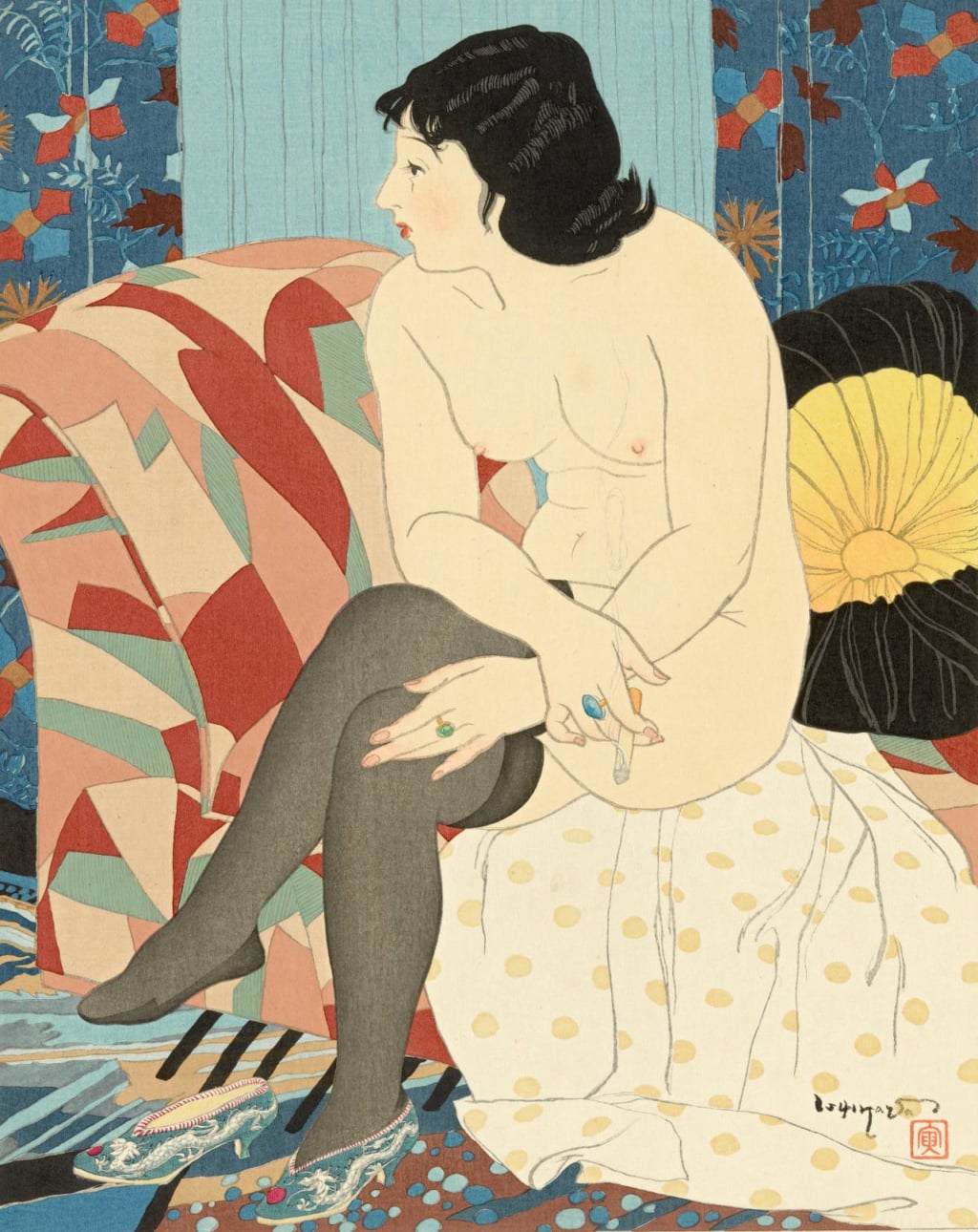
'Resting (Ikoi 憩い)' - 1934 from the 'Ten types of female nudes (Rajo Jusshu 裸女十種)' series © National Gallery of Victoria, Melbourne. Purchased, NGV Asian Art Acquisition Fund, 2014. This digital record has been made available on NGV Collection Online through the generous support of The Gordon Darling Foundation.
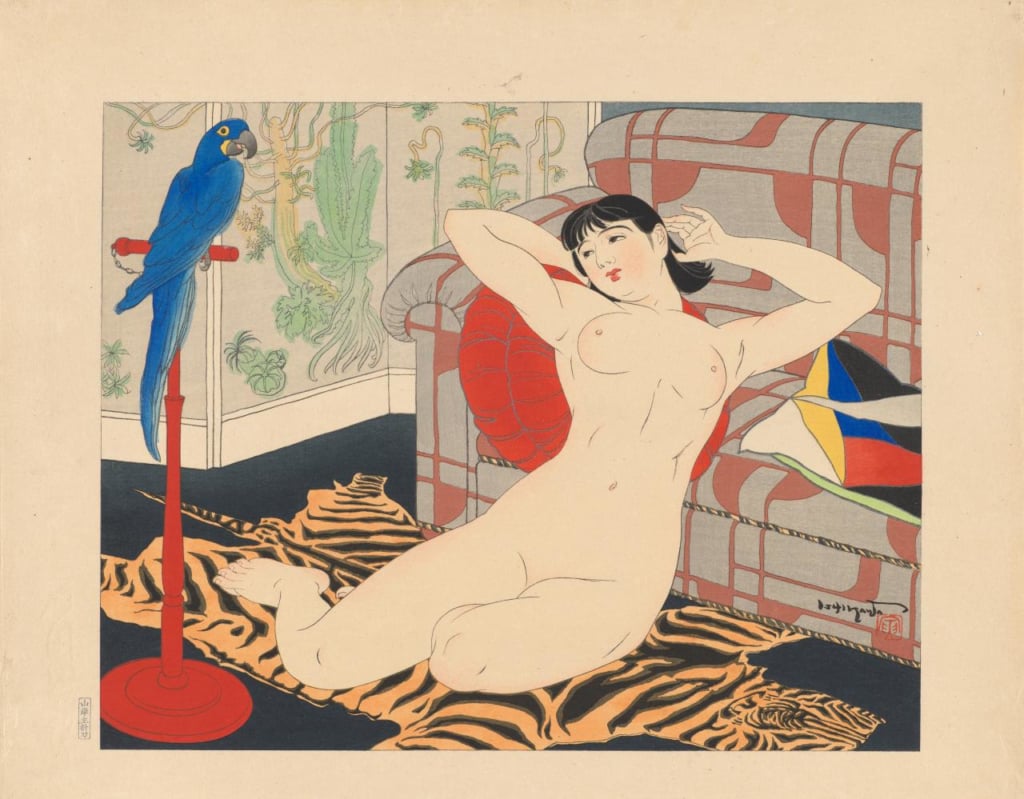
'Blue parrot (Buryu-inko)' - 1934 from the 'Ten types of female nudes (Rajo Jusshu 裸女十種)' series © National Gallery of Victoria, Melbourne. Purchased, NGV Asian Art Acquisition Fund, 2014. This digital record has been made available on NGV Collection Online through the generous support of The Gordon Darling Foundation.
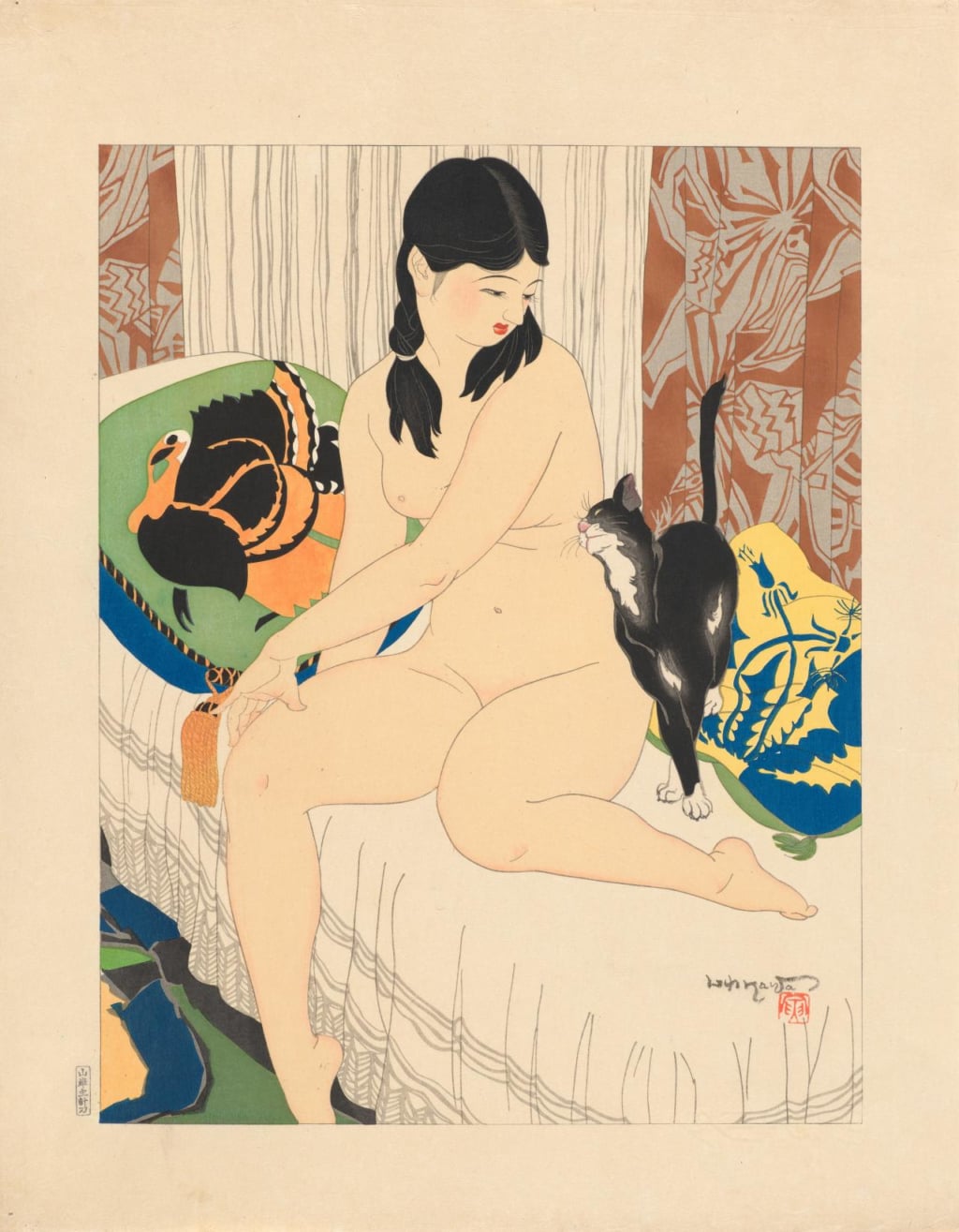
'Black cat (Kuroi Neko 黒い猫)' - 1934 from the 'Ten types of female nudes (Rajo Jusshu 裸女十種)' series © National Gallery of Victoria, Melbourne. Purchased, NGV Asian Art Acquisition Fund, 2014. This digital record has been made available on NGV Collection Online through the generous support of The Gordon Darling Foundation.
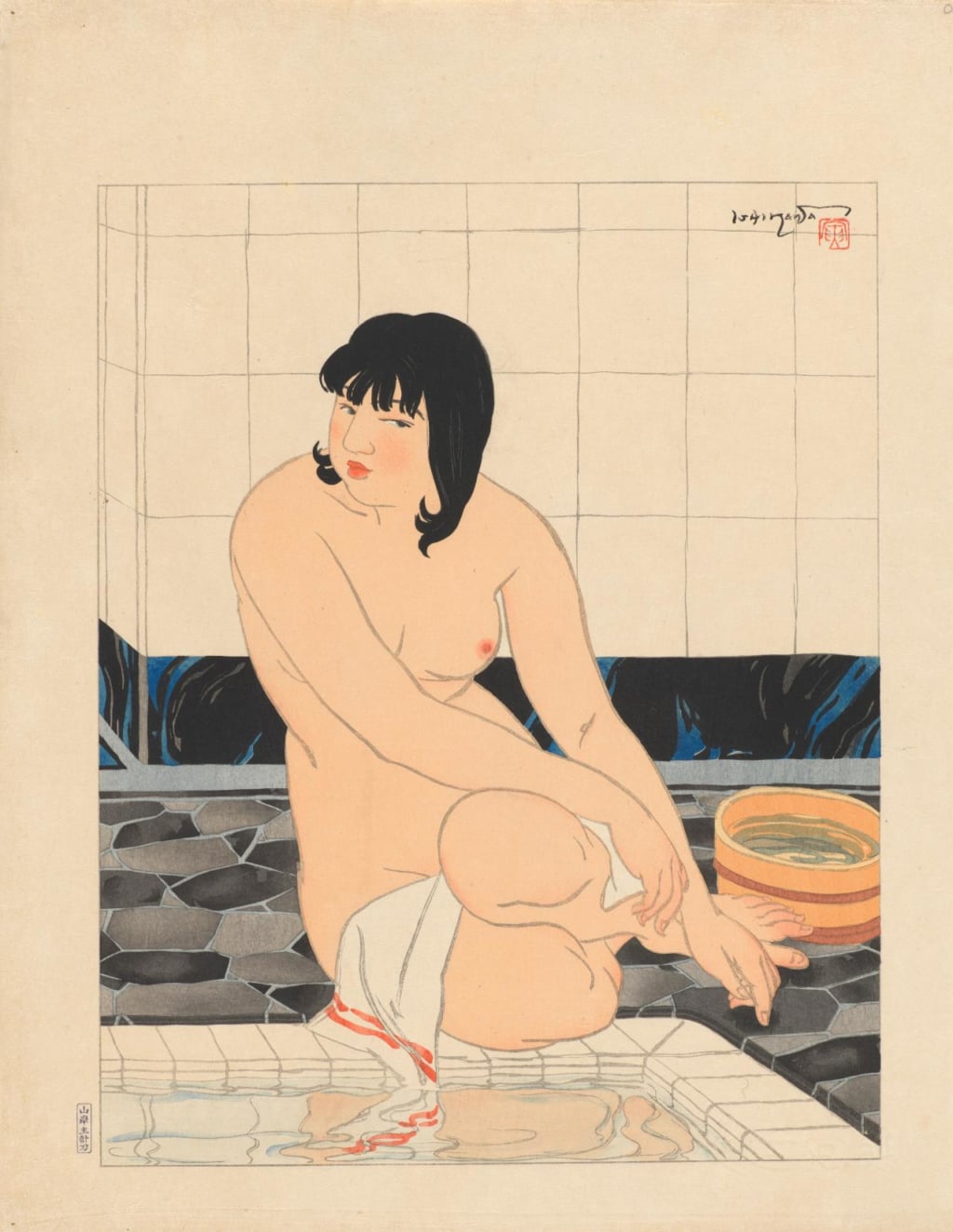
'In the bathroom (Yokushitsu nite 浴室にて)' - 1934 from the 'Ten types of female nudes (Rajo Jusshu 裸女十種)' series © National Gallery of Victoria, Melbourne. Purchased, NGV Asian Art Acquisition Fund, 2014. This digital record has been made available on NGV Collection Online through the generous support of The Gordon Darling Foundation.
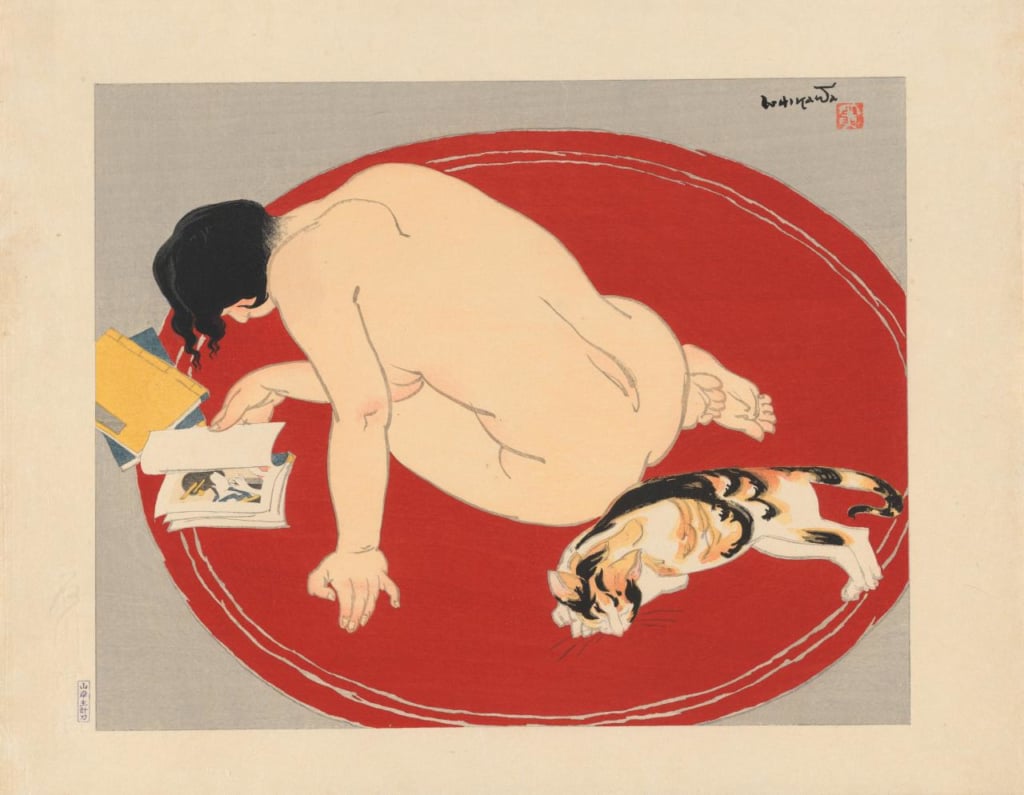
“Leisure time (Tsurezure)” - 1934 from the “Ten types of female nudes (Rajo Jusshu 裸女十種)” series © National Gallery of Victoria, Melbourne Purchased, NGV Asian Art Acquisition Fund, 2014 This digital record has been made available on NGV Collection Online through the generous support of The Gordon Darling Foundation
TRENDING
-
A House from the Taisho Era Reveals Its Secrets
While visiting an abandoned building, Hamish Campbell discovered photographs the owner had taken of the place in the 1920s.

-
The Taboo-Breaking Erotica of Toshio Saeki
The master of the 1970s Japanese avant-garde reimagined his most iconic artworks for a limited box set with silkscreen artist Fumie Taniyama.

-
With Meisa Fujishiro, Tokyo's Nudes Stand Tall
In the series 'Sketches of Tokyo', the photographer revisits the genre by bringing it face to face with the capital's architecture.

-
Masahisa Fukase's Family Portraits
In his series ‘Family’, the photographer compiles surprising photos in which he questions death, the inescapable.

-
Hajime Sorayama's Futuristic Eroticism
The illustrator is the pioneer for a form of hyperrealism that combines sensuality and technology and depicts sexualised robots.





